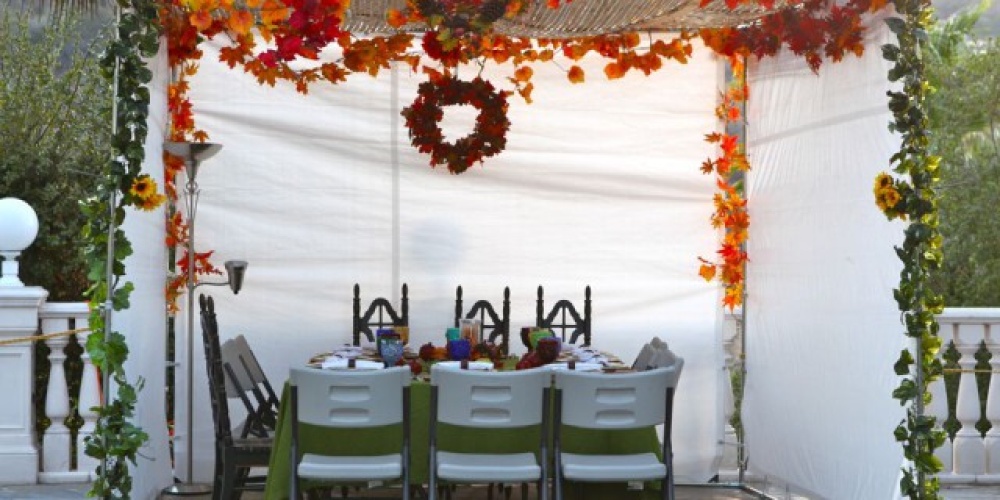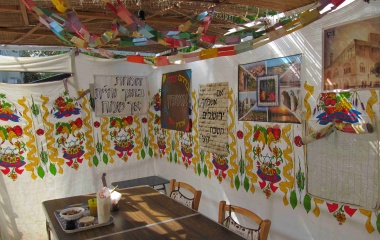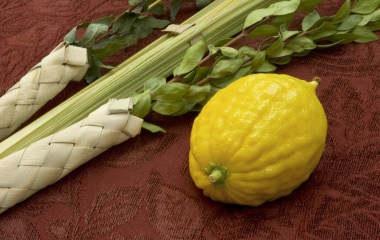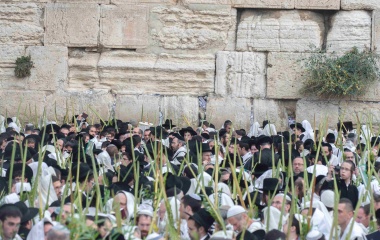
Furthermore the obligation to eat in the sukkah only applies to a full meal, consisting of bread. One can snack - and the definition of a snack is quite inclusive; meat, fish, fruits and vegetables all qualify - to one’s desire outside the sukkah. One may even eat small portions of bread outside the sukkah - something the Mishna (Sukkah 26b) describes Rabbi Tzadok[2] as doing.
When all is said and done one is obligated to eat only one meal in the sukkah - the first night of Yom Tov. For the rest of week one may, if they choose to do so, subside on snacks. The Mishna (ibid 27a) quotes the dissenting view of Rabbi Eliezer that one must eat fourteen meals in the sukkah. Just as in one’s home one eats two meals a day[3] so too in the sukkah one should do the same.
It is not only the amount that one must eat that sets Rabbi Eliezer apart. He maintains that one must build a Sukkah prior to Sukkot and it must remain standing for seven days - a sukkah built during chol hamoed would not be valid. Even more startling is his view that one can only fulfill the obligation of dwelling in a sukkah in one’s own sukkah. One who eats in the sukkah of a friend does not fulfill the mitzva of sukkah. Furthermore one may not even use two of his own sukkot in different locales. To those of us used to opening our sukkot to others this view is rather perplexing.
The mitzva of lulav is rooted in that of simcha, joy, “and you shall take on the first day the fruit of a citron tree, branches of date palms ...and you shall rejoice before the Lord your G-d for seven days” (Vayikra 23:40). Additionally the four species of the “lulav” demonstrate our gratitude to G-d for our material blessings. Neither joy nor gratitude can be observed by proxy. And this is reflected in the unanimously agreed upon requirement that one must own their own own lulav.
Rabbi Eliezer apparently views the lulav and sukkah as one unit. The sukkah reflects our joy and gratitude that G-d offers protection, that while this one week we are exposed to the elements we have a roof over our head the other fifty-one weeks of the year. These two mitzvoth join together in creating zman simchateinu.
The Sages on the other hand view these mitzvoth as distinct and even opposites[4]. As the Rashbam (Vayikra 23:43) notes we are commanded to leave our homes specifically as we celebrate our harvest lest we say “my strength and might of my hands made me all this wealth” (Devarim 8:17). Our secure homes protect us only by the grace of G-d a message made even more powerful if we are made to wander from sukkah to sukkah. We must simultaneously rejoice in our blessing as we reflect on the precariousness of life.
[1] The notion of getting married between Yom Kippur and Sukkot might seem scary to many; yet until recently weddings were much more informal and required much less planning. Rav Dovid Tzvi Hoffman (Melamed Lehoeil, 3:1) in addressing the question of whether it is appropriate to get married during aseret yemi teshuvasays absolutely! noting that he himself was married then. Being such a great mitzvah it behooves us to do so before Yom Kippur.
[2] Undoubtedly even small amounts of food were quite filling for Rav Tzadok. The Talmud relates that he fasted for forty years to try and avert the destruction of the Temple.
[3] In Talmudic times the societal norm was to eat two meals a day. The mitzva of oneg shabbat was observed by having three meals. Interestingly the Gemara does not discuss how the sages exempt one form eating in a sukkah on the Shabbat of Sukkot. Presumably the Mishna that requires only one meal is speaking on a Biblical level whereas the obligation to eat three (or any) meals on Shabbat is rabbinic in nature.
[4] Most interesting is the Biblical presentation of these mitzvoth. The Torah tells us to celebrate Sukkot for seven days and records the apparent conclusion of the five Biblical festivals with the phrase “these are the holidays that you shall proclaim a holy assembly...aside from the Lord’s Shabbat” (Vaikra 23:38). Then, seemingly out of left field, we are told “but on the fifteenth day of the seventh month when you gather in the crop” (v.39) you shall take the lulav, etrog hadas and arava. And yet it is only in this section where we are actually commanded to dwell in the sukkah for seven days. It appears the answer to the question of whether the lulav and sukkah are in essence one or two mitzvoth and whether they represent the same or opposite ideas is yes.



